Our Experience at Oradour-sur-Glane
We arrived at Oradour-sur-Glane by bus around nine in the morning. We began our time in the Centre de la Mémoire (Memory Center) by completing an individual, self-guided auditory tour of the museum. Per the request of the Centre de la Mémoire, we did not take any photos inside of the museum out of respect for the people who lost their lives in the massacre. However, the museum directors did allow us to take some photos of the village itself as it is preserved today.
We walked through five different themed rooms: the first discussed the rise of nazism and the political/social environment before the war, as well as the French Defeat (Vichy Government, Resistance Movement). This information was important for us to learn in order to have a deeper understanding of the foundations of the second world war and its context, as seen through the perspectives and experiences of the French people.
In the second room, we learned about the infiltration of the Nazi regime in France and other acts of violence towards French civilians (for example, the massacres on June 8th and 9th, 1944). We listened to the history of the first French concentration camp – called Nexon – in the region of Limoges, which opened around 1940 and closed its doors in 1945. Nexon was the first concentration camp for French prisoners; most were then transferred to the Dracy camp and finally, the Auschwitz camp. The most powerful part of this exhibit, for us, was listening to excerpts of Charles de Gaulle’s famous speech from London through the BBC radio (June 18, 1940). His message to his French sisters and brothers, on behalf of the resistance, was this: “Quoi qu’il arrive, la flamme de la résistance française ne doit pas s’éteindre et ne s’éteindra pas.” In English, this translates to: “Whatever happens, the flame of French resistance must not and will not go out.”
In the third room, we learned the depth of the tragedy on June 10th, 1944 in Oradour-sur-Glane. It is important to understand that in the three years leading up to June 10th, millions of people inside and out of France faced brutality and violence from the Nazi regime. For example, though resistance fighters were fighting for French freedom, millions of members from the Jewish community, people with disabilities, and resistance fighters were killed in mass executions and buried in mass graves. The Nazi regime had conquered half of France and focused their military strategy on creating a sense of extreme fear in order to gain control of the French people. The attack on Oradour-sur-Glane was planned and deliberate; as detailed in room three, the Nazi party planned to make an example of the people in Oradour-sur-Glane. They attacked the town from both east and west, surrounding the village and murdering civilians during the day, in cold blood. The Nazi soldiers had identified Oradour-sur-Glane because it could be easily surrounded geographically, was home to many war refugees, and was in close proximity to Limoges. They wanted to remind the French people that “a massacre could happen at any time or place.” The attack occurred at 1pm on June 10th. Only five men, one woman, and one child survived. 197 men, 240 women, and 205 children were killed. Civilians were locked in homes (men) and the church (women and children), which were then set on fire and attacked with grenades.
An excerpt from Jean Pillier, who was traveling to the village to pick up his wife and child at the time of the attack, sums up the devastation of the massacre. He wrote:
“I tried to pick up my wife and kid but was stopped by Germans. It took 2 weeks and I headed towards the graves that are already been discovered. The scene was horrifying. In the midst of the pile of rubble I could see burnt human bones, particularly the pelvic bones. I saw several graves one next to the junction of the road Saint Julian and another in the garage of the village and the food in the barn located next to the Shen café, although the bones were almost completely destroyed, the number of victims seemed very high as I walked through the village. I had noticed that morning had disappeared and the two remaining houses had been burned down. It was 5 PM and I learned that corpses of women and children had just been discovered in the church. There are no words to describe such an abomination, although the upper structure of the church and the bell were entirely burnt the bolts of the had stood the fire.”
The fourth room captured the events that followed the massacre on June 10th and highlighted the many ways that the French Republic mourned the loss of the martyred village. Following the war, the attack in Oradour-sur-Glane went under trial and was declared to be a war crime. Though more than 100 soldiers attacked the village, only 21 were put on trial. All were found guilty of war crimes, though 7 French soldiers forced into war by the Nazi regime were granted amnesty.
In the fifth and final room, we read many peace messages and were invited to engage in silent meditation/reflection. All of our classmates agreed that one of the most powerful quotes was “those who cannot remember the past are condemned to repeat it” (George Santayana, 1905). This quote led to some group reflection on how we can honor the memory of the martyred city and make sure history does not repeat itself.
After concluding our individual tour, we walked through the village of Oradour-sur-Glane. To honor and remember the acts of terror against the French people, the country decided to leave the village exactly how it was after the attack. The remains serve as a reminder of the lives lost but not forgotten, as well as highlight the importance of taking a stand for collective freedom and liberation. Here are some photos of the village for you to reflect upon:
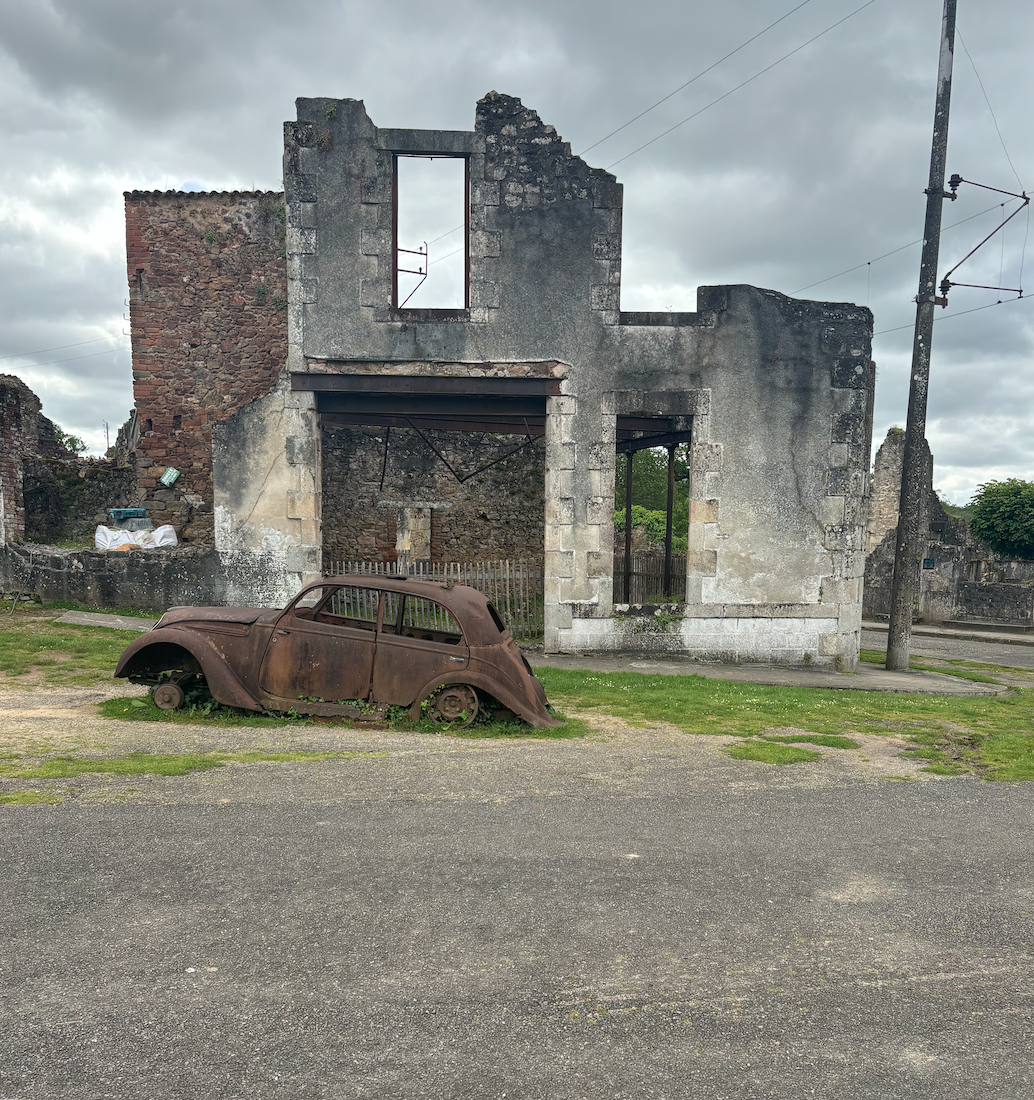
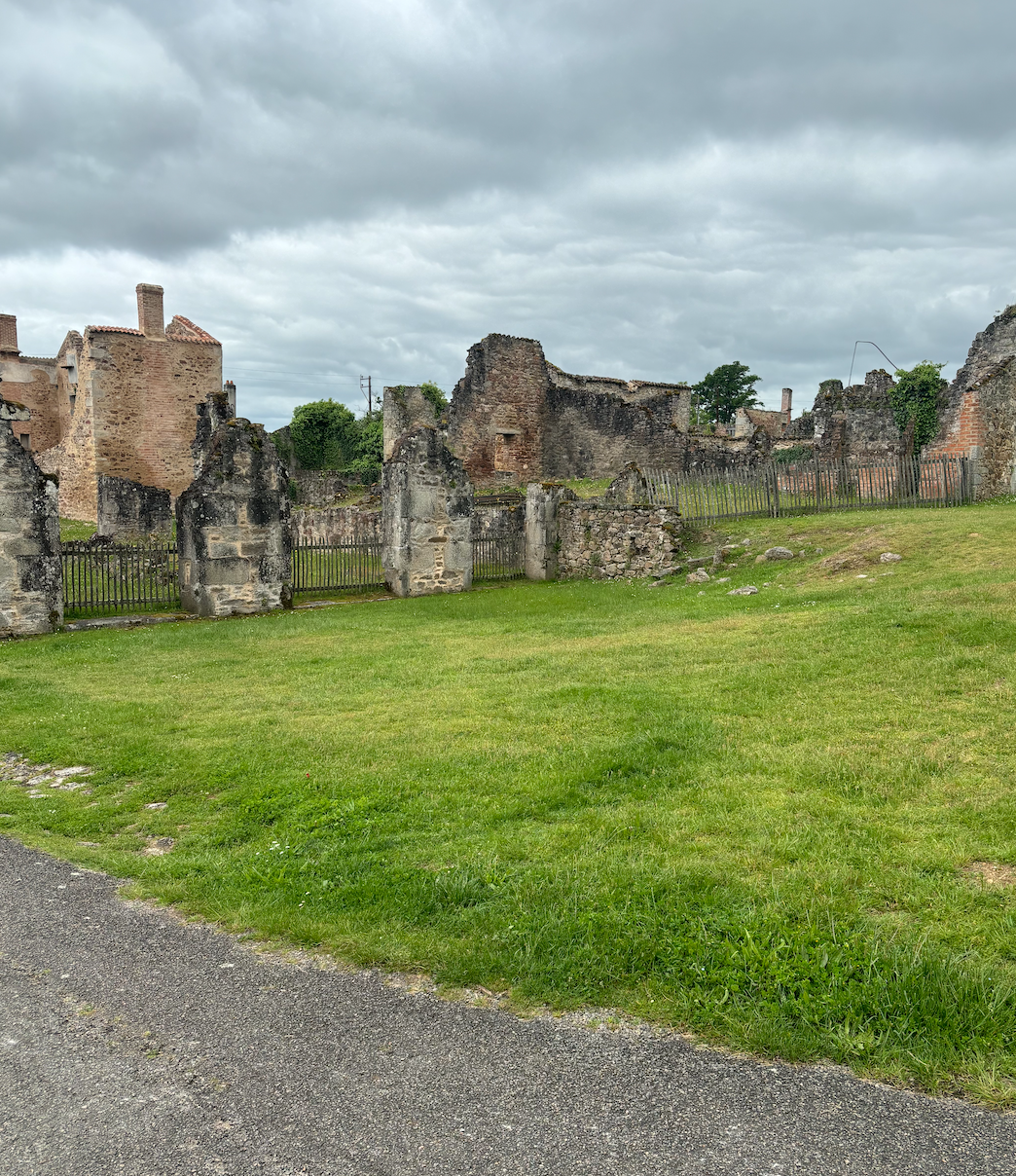
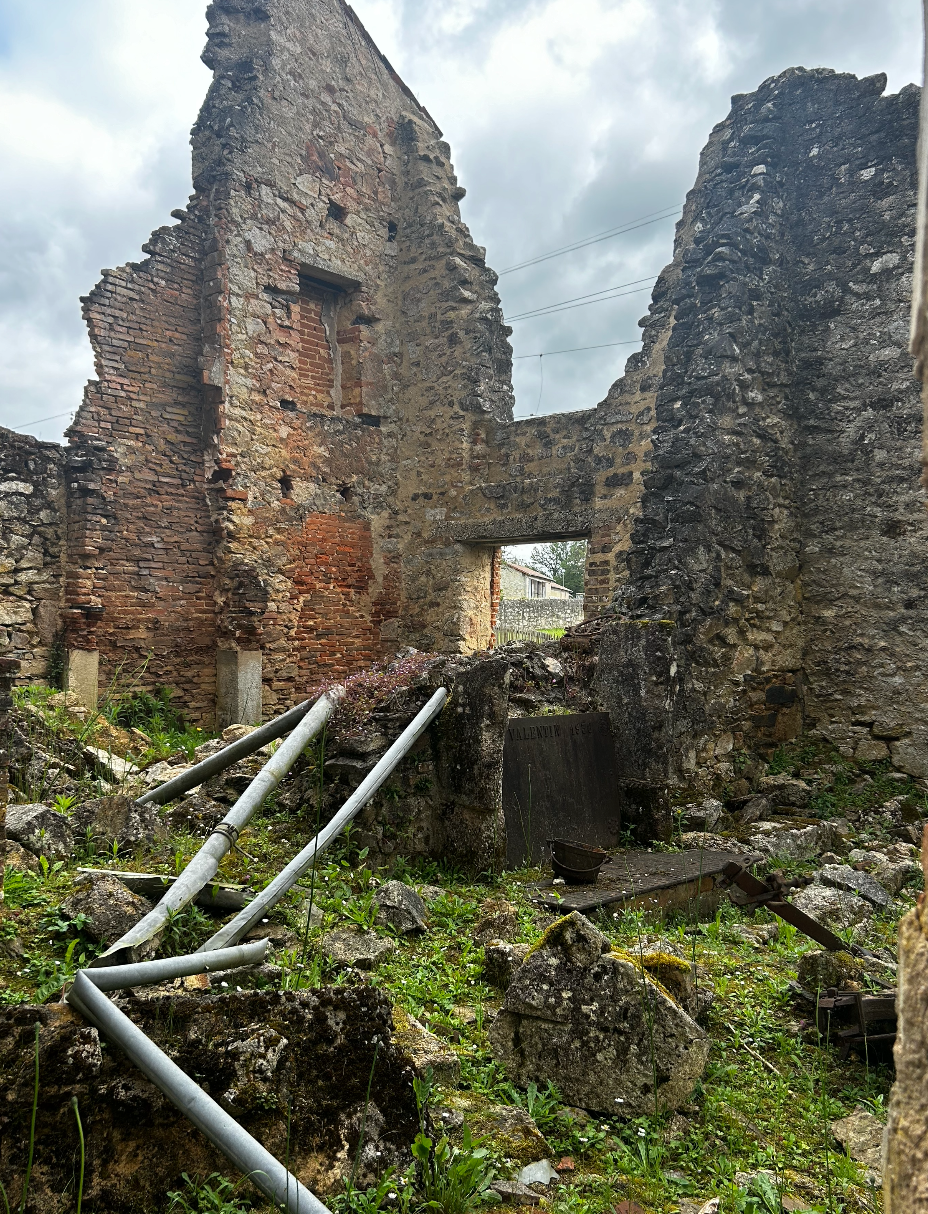
Remains of village homes and buildings.
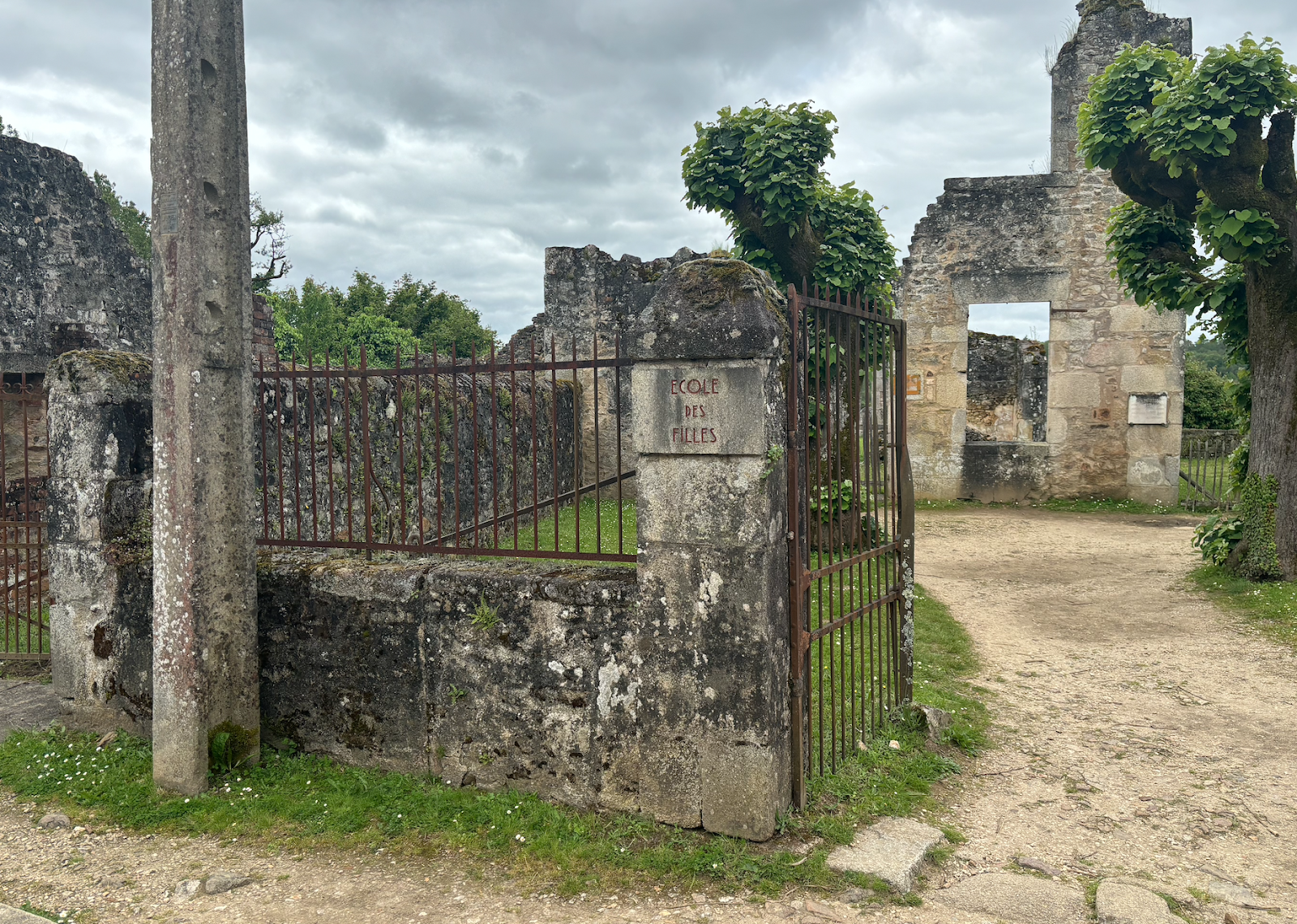
Remains of the School for Girls.
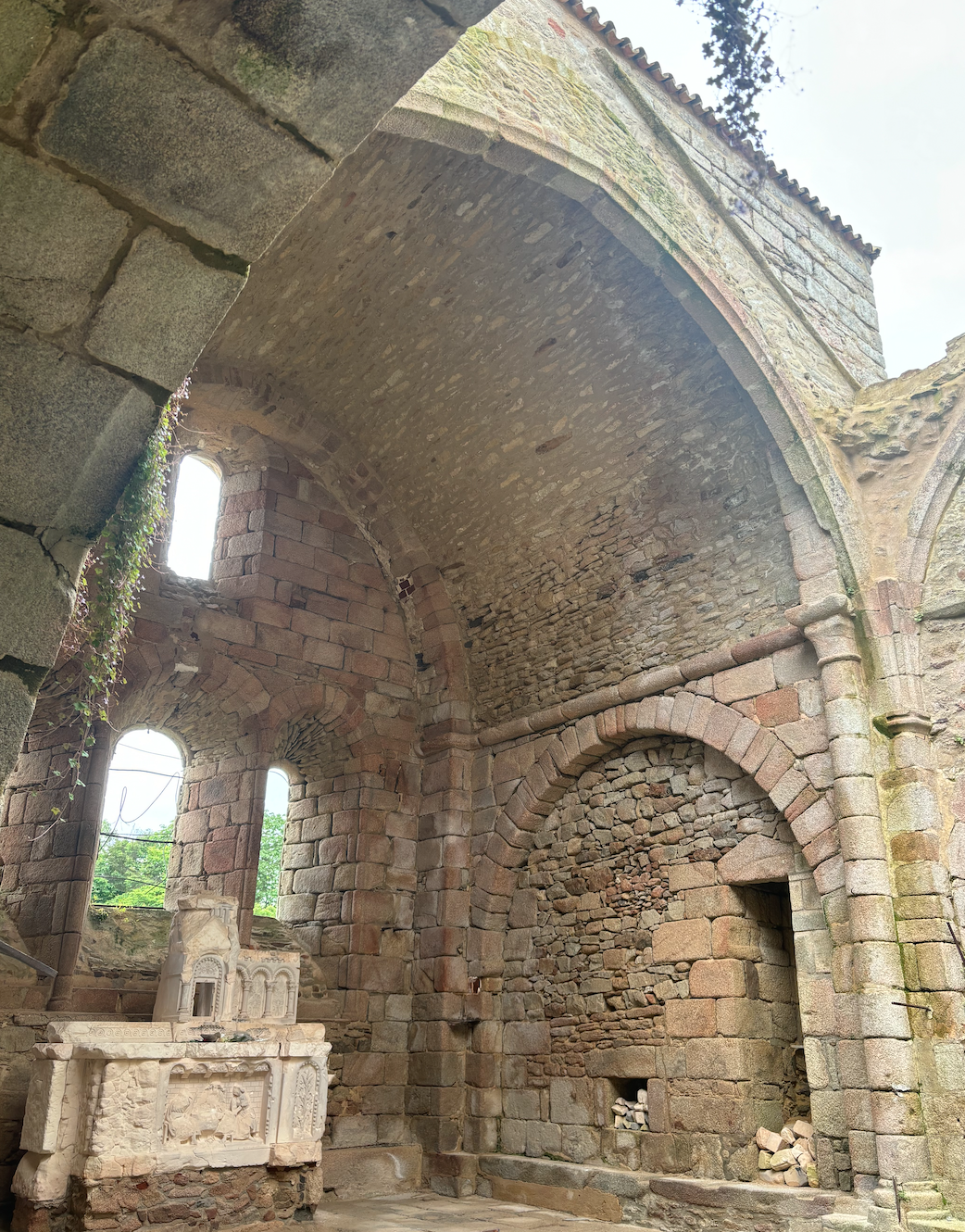
Remains of the church where women and children were held hostage and killed.
The Rest of Our Day: School Visit, Informal Touring, and Group Dinner
After returning from Oradour-sur-Glane, we had lunch in Limoges. Classmates enjoyed sushi, Thai food, and sandwiches. Our hosts from the University of Limoges set up a visit at a local elementary school. We spent time with students of all different ages – some were six or seven, others were ten or eleven. We enjoyed speaking with the French students and their teachers. Many of the students were very excited to meet American people and practice speaking English. We read some of our favorite children's books such as Strega Nona, The Invisible String, and The Year We Learned to Fly. In our classroom, Leo taught a small group of students about subtraction and addition, Matt led a mini math lesson in English, and Maggie read the book “The Invisible String” out loud to the class.
Pictures of the School:
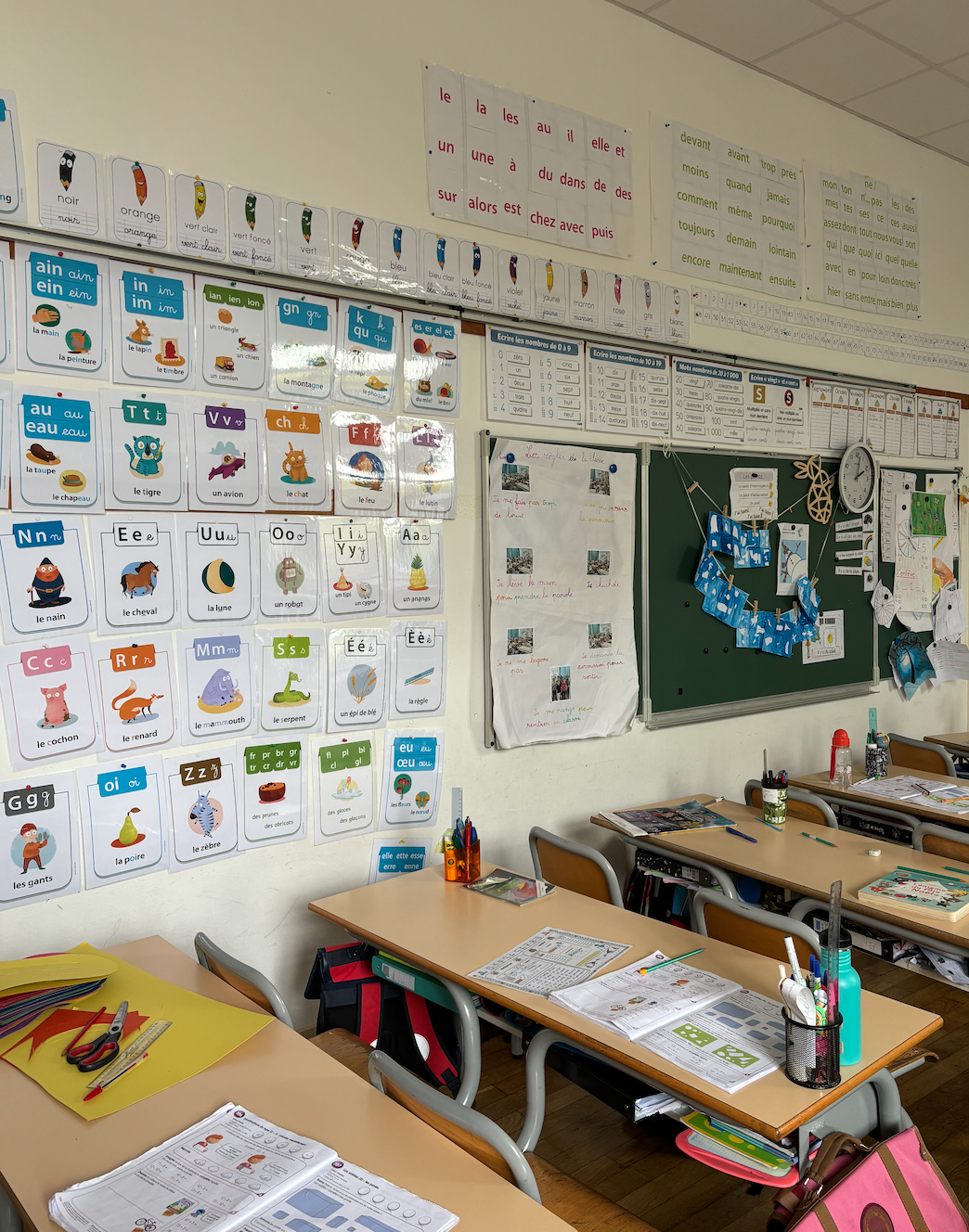
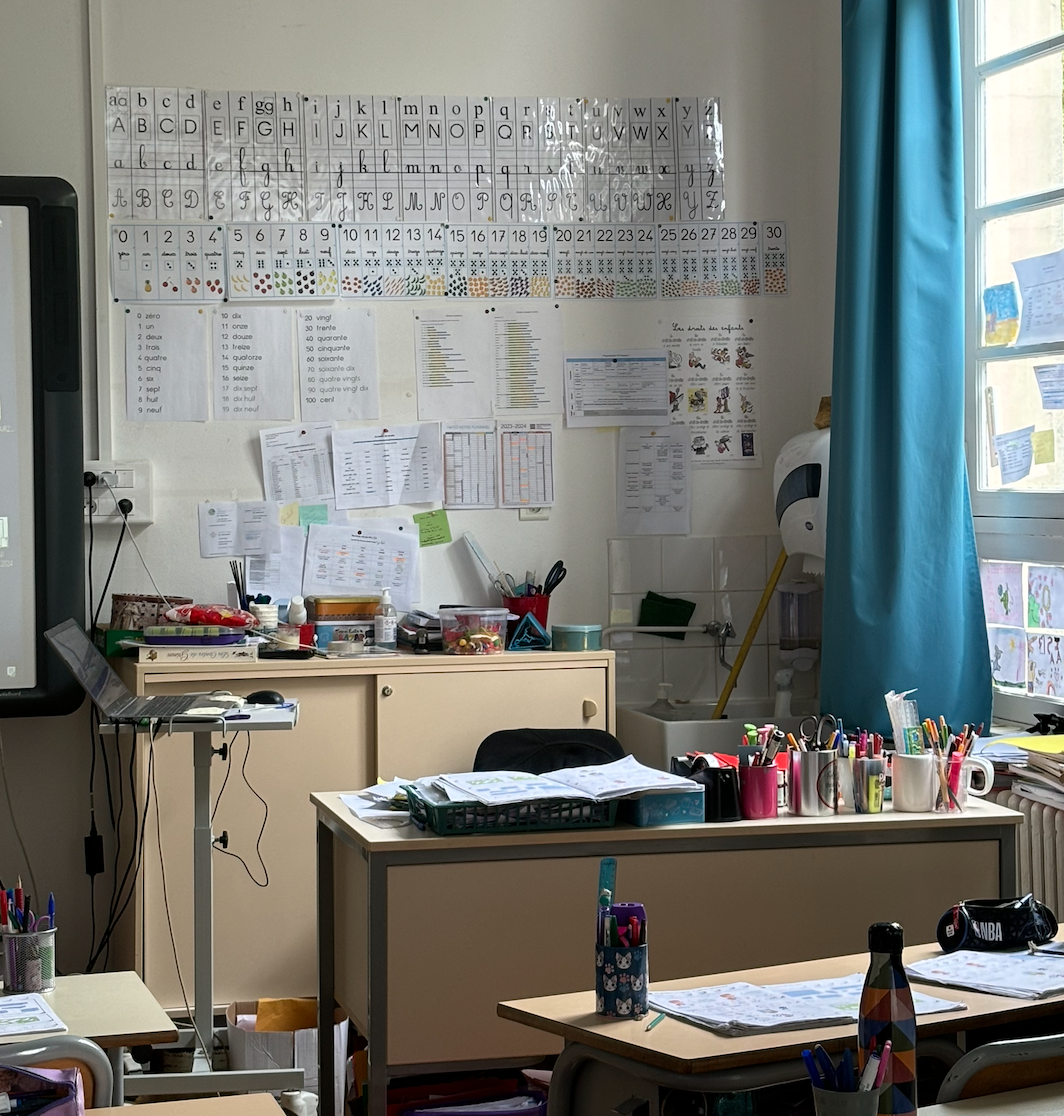

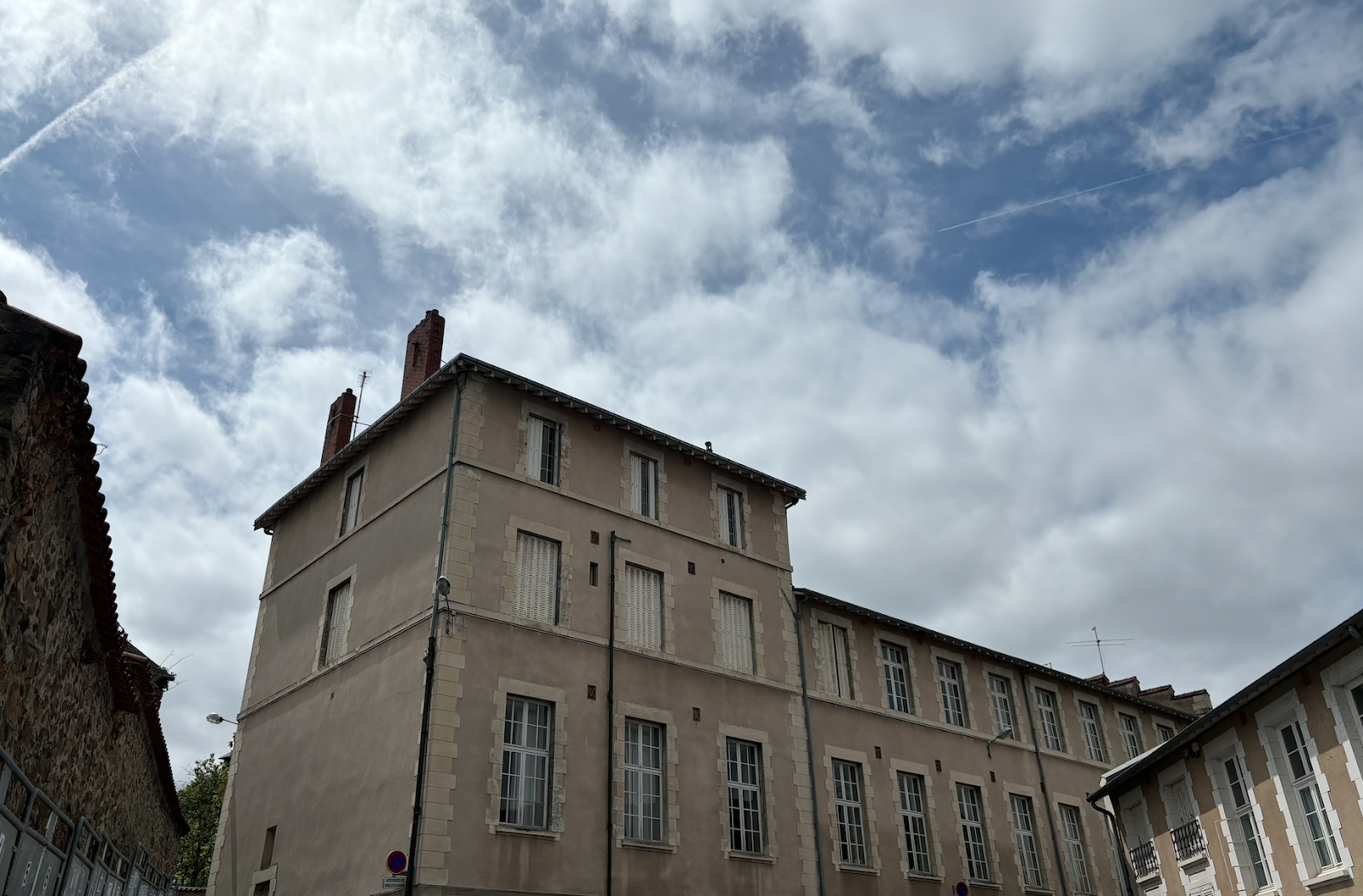
After, we broke into smaller groups to do some informal touring, shopping, and relaxing. Students explored local parks, jogged by the river, window shopped in downtown Limoges, and took the extra time to take a much needed break to read a book or do laundry.
Finally, we ended our night at a local restaurant called Le Versailles. We enjoyed the company of our two hosts from the University of Limoges, their partners, and one of their students in the teacher-preparation program. Some of our favorite dishes were Bruschetta and Buratta, a pasta dish called Tagliatelles with veal or scallops, cheesecake, and lemon chicken.
We are writing this blog post from our hotel – it is currently 11:50 pm and we are looking forward to a very busy day of touring and traveling back to Paris tomorrow. We have learned so much from our time in Limoges and cannot wait to share more when we get back to the United States. Sending love and saying goodnight from France!


































